Lake Murray Dam, an engineering marvel located near Columbia, South Carolina, is a vital part of the state’s infrastructure and cultural heritage. Constructed between 1927 and 1930, this gravity dam serves multiple purposes, including hydroelectric power generation, flood control, and recreational activities. It’s a landmark that is synonymous with stability, resourcefulness, and architectural brilliance.
But the question that often lingers in the minds of many is: “What if Lake Murray Dam breaks?” This hypothetical scenario, though remote given the stringent safety measures in place, is worth exploring to understand the potential consequences, prepare for emergencies, and appreciate the intricate design that prevents such a failure.
The dam spans a length of 1.5 miles (2.41 kilometers) and stands 213 feet (64.92 meters) tall. It harnesses the Saluda River, creating a reservoir that covers approximately 50,000 acres (202.34 square kilometers). Lake Murray Dam’s primary function is to generate hydroelectric power, contributing significantly to the region’s energy supply.
Lake Murray Dam’s construction involved approximately 5,000 workers and the use of around 1.4 million cubic yards (1.07 million cubic meters) of earth and rock. The dam has been upgraded several times over the decades to meet modern safety standards, with the most recent renovation completed in 2005. These upgrades include the installation of additional spillways, known as flood gates, that help manage water levels during heavy rainfall.
Though Lake Murray Dam is engineered with exceptional care, the thought of its failure leads to an interesting exploration of “what ifs.” A failure could theoretically result from extreme natural events, such as unprecedented earthquakes or floods. However, it’s essential to note that the dam is built to withstand such occurrences, designed to manage a water flow of approximately 173,000 cubic feet (4,897 cubic meters) per second.
The flood gates are a crucial aspect of this protection. The gates can release excess water systematically, ensuring that the pressure on the dam’s structure is controlled. This controlled release is vital for preventing lake murray dam flooding in surrounding areas.
Lake Murray Dam, with its rich history, complex engineering, and central role in the region, embodies human ingenuity. The exploration of a hypothetical failure scenario is more about understanding the dam’s robust features and the preventative measures in place rather than predicting a tragic event.
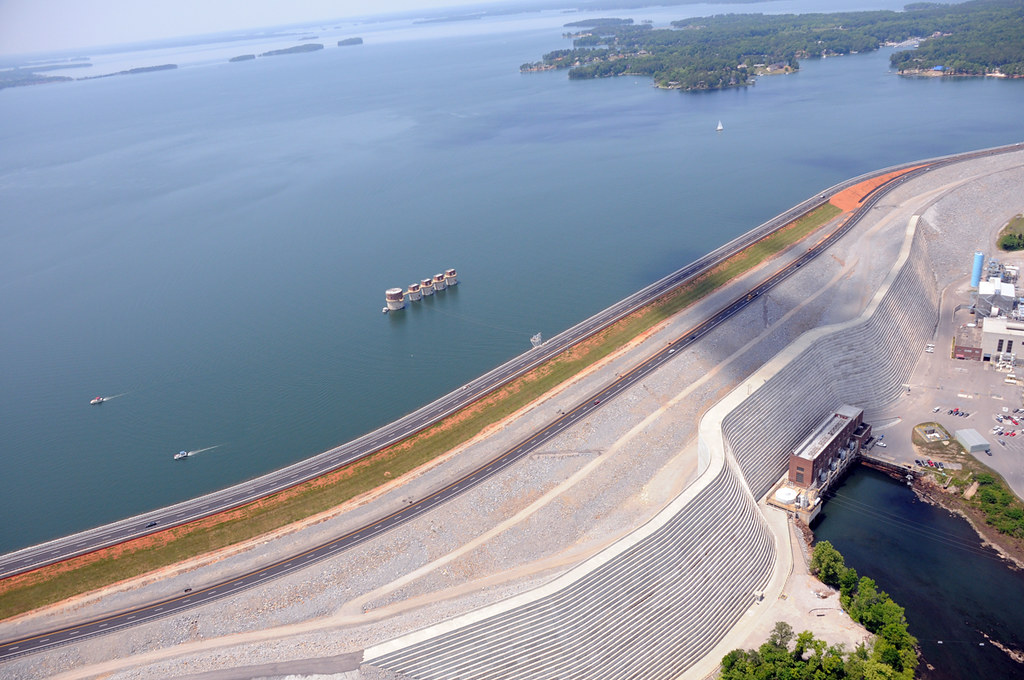
In the following sections, we will discuss the dam’s technical details, its contributions to the community, and a more profound exploration of scenarios concerning lake murray dam water release, lake murray dam flood gates operation, and lake murray dam’s potential impacts. This article aims to shed light on these aspects, enhancing awareness and appreciation for one of South Carolina’s most significant landmarks.
1. Historical Background and Construction of Lake Murray Dam
1.1 When was Lake Murray Dam Built?
Lake Murray Dam, a vital component in South Carolina’s landscape, was built between 1927 and 1930. Its construction was an ambitious project that required detailed planning, immense labor, and cutting-edge engineering for its time.
1.2 Planning and Design of Lake Murray Dam
The planning of Lake Murray Dam began in the early 1920s when the demand for hydroelectric power was growing. The dam was designed to harness the Saluda River, which proved to be an optimal location due to its strong flow and topographical features. An area of 50,000 acres (202.34 square kilometers) was chosen for the reservoir.
The design incorporated a gravity dam structure, meaning that the dam’s weight would counteract the pressure from the water. The construction required about 1.4 million cubic yards (1.07 million cubic meters) of earth and rock.
1.3 Construction Timeline and Labor of Lake Murray Dam
The construction of Lake Murray Dam commenced in 1927. A workforce of approximately 5,000 laborers was engaged in the massive task. The dam was completed in 1930, after three years of continuous labor. This process was marked by the implementation of state-of-the-art machinery and methods for the era.
The dam spans a length of 1.5 miles (2.41 kilometers) and stands 213 feet (64.92 meters) tall. To ensure its stability, engineers conducted extensive geological surveys and tests to identify the best materials and techniques.
1.4 Innovative Features and Upgrades of Lake Murray Dam
Dam’s construction incorporated innovative features such as the ability to release excess water through flood gates. This aspect has played a crucial role in preventing Lake Murray Dam flooding over the years.
The dam underwent significant renovations in 2005, with a focus on improving its ability to manage floodwaters. The upgrades included widening the spillways and enhancing the capacity of the lake murray dam flood gates to handle a flow of up to 173,000 cubic feet (4,897 cubic meters) per second.
1.5 Significance and Legacy of Lake Murray Dam
Lake Murray Dam’s construction marked a new era of engineering and energy production in South Carolina. The dam’s ability to generate hydroelectric power helped fuel industrial growth and energized countless homes and businesses.
Moreover, Lake Murray itself became a hotspot for recreational activities such as fishing and boating. Its shoreline, which stretches for over 500 miles (804.67 kilometers), hosts diverse wildlife and flora.
The historical background and construction of Lake Murray Dam offer fascinating insights into the world of engineering and human determination. Its well-planned design, innovative features such as dam water release mechanisms, and significance in energy production and flood control make it a remarkable structure.
2. Hypothetical Scenario of Lake Murray Dam Failure
2.1 What if Lake Murray Dam Breaks?
Dam’s history and engineering have been characterized by robust construction and upgrades, creating a structure designed to last. However, the hypothetical question “What if Lake Murray Dam breaks?” deserves an in-depth exploration, as it brings attention to potential causes, immediate impacts, safety measures, and the complexity of the dam’s design.
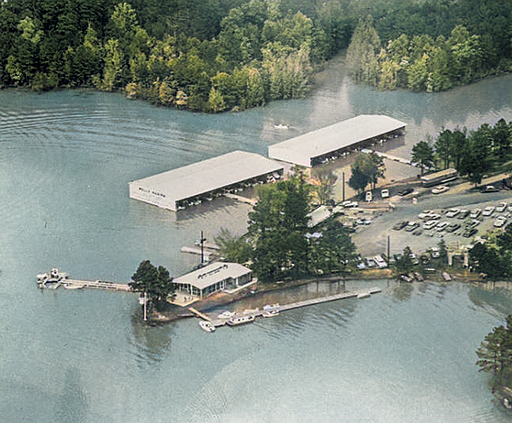
2.2 Potential Causes of Lake Murray Dam
- Earthquakes: While South Carolina is not highly prone to earthquakes, the dam is still designed to withstand seismic activities. It’s built to endure tremors of up to a magnitude of 5.5, a feature that complies with modern standards.
- Extreme Weather Conditions: The dam has been constructed to withstand heavy rainfall and storms. With a capacity to handle a water flow of 173,000 cubic feet (4,897 cubic meters) per second, extreme weather alone is unlikely to cause a failure.
- Structural Failures: Regular inspections ensure that any wear and tear or potential weak points in the structure are identified and rectified. The last major renovation in 2005 involved reinforcing certain areas to meet current safety standards.
- Human Error: Accidents or mistakes in the dam’s operation could theoretically lead to problems, but strict protocols and highly trained staff minimize this risk.
2.3 Immediate Impacts of Failure of Lake Murray Dam
- Water Release Dynamics: Dam’s reservoir holds approximately 1.3 trillion gallons (4.92 trillion liters) of water. A sudden release of this volume would cause unprecedented flooding downstream.
- Affected Areas: Cities and towns like Columbia would be at risk. A study by the Federal Energy Regulatory Commission (FERC) estimated that a failure could submerge parts of Columbia under 10 feet (3 meters) of water within a few hours.
- Infrastructure Damage: Bridges, roads, and buildings in the path of the floodwaters would face severe damage. This could lead to estimated billions of dollars in losses.
- Environmental Impact: The ecosystem of the Saluda River could be devastated by a sudden release of the reservoir’s water. This would affect fish, wildlife, and plant life.
2.4 Lake Murray Dam Flood Gates
- Controlled Water Release: The dam’s flood gates are designed to control water release, especially during heavy rains. These gates can release excess water systematically, mitigating the risk of uncontrolled flooding.
- Flood Gate Capacity: The flood gates were upgraded in 2005 to handle increased water flow. These enhancements were made in compliance with modern regulations, providing additional safety measures.
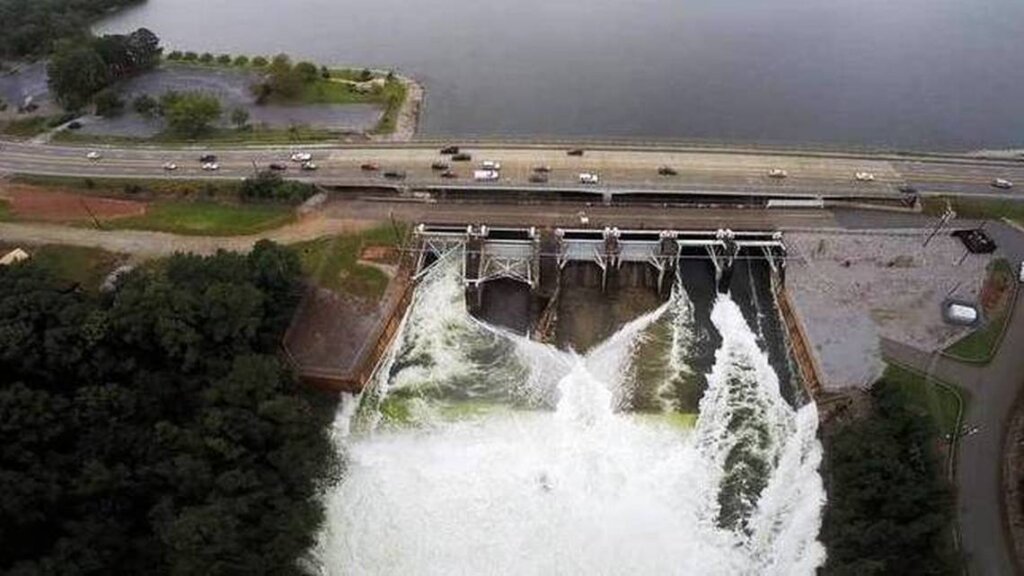
2.5 Emergency Preparedness
Lake Murray Dam’s management includes regular drills and coordination with local authorities to ensure emergency preparedness. Community awareness programs and well-planned evacuation routes form part of this strategy.
2.6 Technical Insights into Lake Murray Dam’s Design
- Spillways and Flood Gates: The dam’s spillways and flood gates are crucial components in managing water levels. These were widened during the 2005 renovations, providing more effective control over lake murray dam water release.
- Monitoring Systems: Advanced monitoring systems are in place to detect any signs of structural weaknesses or other issues that could lead to failure.
- Compliance with Regulations: Dam complies with regulations set by bodies such as FERC, ensuring that it meets or exceeds all safety standards.
2.7 Analysis of Lake Murray Dam Breaking
The hypothetical scenario of Dam breaking, though remote, offers an insightful exploration into the complexity of dam engineering, management, and emergency preparedness. This analysis shows the intricate balance of design, monitoring, human intervention, and natural factors that contribute to the dam’s robustness.
Lake Murray Dam’s history, construction features, and upgrades all point to a structure that is built to endure. The controls over lake murray dam flooding, such as the capacity and functionality of the flood gates, are testaments to human ingenuity and foresight.
While this scenario is unlikely, understanding the potential causes, immediate impacts, and the elaborate design features enriches our appreciation for this vital structure. It also underlines the importance of continued vigilance, maintenance, and public awareness to ensure the ongoing safety and functionality of Lake Murray Dam.
3. Recreational Aspects and Accessibility of Lake Murray Dam
Lake Murray Dam isn’t just an engineering marvel or a significant source of hydroelectric power; it also serves as a recreational hotspot for locals and tourists alike. From scenic walking paths to boating and fishing opportunities, the area around the dam offers various activities that cater to outdoor enthusiasts. Here, we explore the recreational aspects of the dam, including how to get there, the length of the dam walk, and other related information.
3.1 How Long is the Lake Murray Dam Walk?
The Lake Murray Dam walk is a popular activity, offering breathtaking views of the lake and surrounding areas. It spans across the length of the dam itself, providing a unique perspective of this engineering feat. The walking path is:
- Length: Approximately 1.7 miles (2.74 kilometers) one way.
- Surface: Well-maintained, making it suitable for walkers and joggers of all levels.
- Accessibility: Open most days, weather permitting, from dawn to dusk.
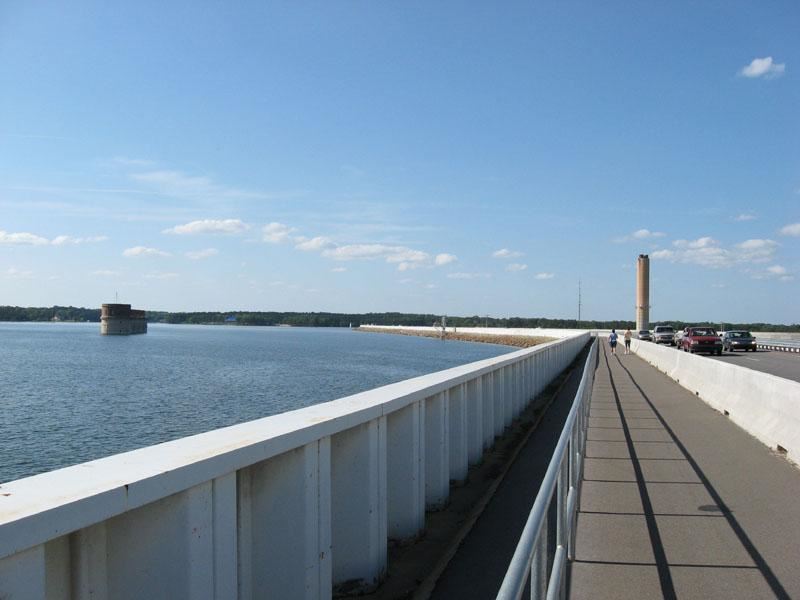
3.2 How to Get to Lake Murray Dam?
Lake Murray Dam is easily accessible from various parts of South Carolina. Here’s how to reach it:
- By Car: It’s located near Columbia, SC. If you’re driving from downtown Columbia, it’s a straightforward route along SC-6 W.
- By Public Transportation: Though public transportation options may be limited, local taxi services and rideshare apps can facilitate the journey.
- Parking: There are parking facilities nearby, making it convenient for those arriving by car.
3.3 How Far is it Across Lake Murray Dam?
Crossing the Lake Murray Dam provides a unique perspective of the water and surrounding landscapes. The distance across the dam is essential information for those planning to walk or jog along the pathway:
- Distance Across the Dam: Approximately 1.5 miles (2.41 kilometers).
- Width: The dam itself is around 25 feet (7.62 meters) wide at the top.
- Height: Standing at 213 feet (64.92 meters), it offers spectacular views.
3.4 Recreational Activities at Lake Murray Dam
Walking and Jogging
The dam walk offers a scenic and serene environment for walking and jogging. Benches along the way allow for rest and reflection while enjoying the view.
Fishing
Lake Murray is home to a variety of fish, including largemouth bass and catfish. Anglers will find dedicated fishing spots with access to prime fishing areas.
Boating and Water Sports
With nearby marinas and boat launch facilities, the dam is a gateway to various water sports like kayaking, sailing, and motor boating.
Picnicking
Several picnic spots near the dam offer a perfect setting for a family outing. These are equipped with tables and grills.
Wildlife Observation
Bird enthusiasts and nature lovers can find many species of birds and wildlife near the dam. Observing them in their natural habitat adds to the attraction of the area.
3.5 Safety and Regulations at Lake Murray Dam
While the dam offers numerous recreational activities, it’s essential to be aware of specific safety regulations:
- Swimming: Swimming near the dam is prohibited due to strong currents and potential lake murray dam water release.
- Fishing Regulations: Anglers need to adhere to state fishing regulations, including licenses and catch limits.
- Pathway Rules: The walking and jogging path has guidelines to ensure safety and enjoyment for all users.
4. Economic Impact and Utility of Lake Murray Dam
Lake Murray Dam is more than just a feat of engineering; it’s a vital economic component in South Carolina, serving many functions from recreation to water storage and most significantly, power generation. In this section, we’ll delve into the details of the dam’s contribution to the electrical grid, its role in powering homes, and the economic implications if the dam were to fail.
4.1 How Many Homes Powered by Lake Murray Dam?
Dam’s hydroelectric facility is a cornerstone of the region’s energy infrastructure. Here are the numerical details reflecting its contribution:
- Generation Capacity: Lake Murray Dam has a generating capacity of approximately 200 megawatts (MW).
- Homes Powered: With the assumption that the average household consumes about 0.9 kW, the dam’s capacity is sufficient to power around 222,000 homes in the region.
- Percentage of Regional Power: The dam’s output constitutes a significant portion of the energy needs of the local area, reflecting its importance to the community.
4.2 Hydroelectric Power of Lake Murray Dam: A Detailed Overview
Dam’s hydroelectric facility operates using a series of turbines and generators:
- Turbines: Water released from the reservoir flows through turbines, converting the water’s kinetic energy into mechanical energy.
- Generators: This mechanical energy then drives generators that convert it into electrical energy.
- Transmission: The generated electricity is transmitted to the local grid, where it’s distributed to homes, businesses, and industries.
4.3 Contribution to Renewable Energy
Hydroelectric power is a form of renewable energy, and Lake Murray Dam’s contribution in this aspect is vital:
- Environmental Impact: Compared to fossil fuels, hydroelectric power produces no direct emissions, contributing to cleaner air.
- Energy Independence: As a local energy source, it enhances the region’s energy security and reduces reliance on imported fuels.
4.4 Economic Aspects of Hydroelectric Power
- Job Creation: The dam provides employment opportunities in maintenance, operations, and recreation-related services.
- Revenue Generation: From fishing licenses to recreational fees, the dam contributes to local revenue streams.
4.5 Economic Impact of Lake Murray Dam: Beyond Power Generation
The dam’s significance extends beyond power generation, encompassing other economic facets:
- Water Supply and Irrigation: Dam provides essential water resources for irrigation, supporting local agriculture.
- Flood Control: By managing water levels, the dam protects properties and farmland from flooding, saving millions in potential damage.
- Recreational Economy: The tourism and recreational activities around the dam contribute to local businesses and the hospitality industry.
4.6 What If Lake Murray Dam Breaks? Potential Economic Implications
A failure of Lake Murray Dam would have far-reaching economic consequences:
- Loss of Power Generation: A breakdown would disrupt the supply to the 222,000 homes relying on its power, leading to potential blackouts and financial strain.
- Infrastructure Damage: Flooding caused by a dam break could damage roads, bridges, and other vital infrastructure, requiring extensive and costly repairs.
- Agricultural Losses: Farms dependent on the dam’s water for irrigation would face severe challenges, impacting food supply and prices.
- Recreational and Tourism Impact: A failure could deter tourists, reducing revenue for local businesses and the broader tourism industry.
- Property Damage: Properties downstream could be flooded, leading to significant loss in property values and reconstruction costs.
4.7 Lake Murray Dam’s Flood Gates and Water Release Mechanisms
Understanding the dam’s safety features is vital in assessing its potential failure:
- Flood Gates: The dam is equipped with flood gates to manage water levels, allowing controlled releases to prevent undue pressure on the dam.
- Regular Inspections: Regular checks and maintenance ensure the dam’s integrity, reducing the risk of unexpected failures.
- Emergency Protocols: In the event of a potential failure, there are established protocols for lake murray dam water release, minimizing damage.
FAQ’s
What would cause Lake Murray Dam to break?
Lake Murray Dam could break due to extreme weather conditions, seismic activity, or structural failure. Regular inspections, maintenance, and engineering improvements are in place to minimize these risks.
What areas would be affected if Lake Murray Dam breaks?
If Lake Murray Dam were to break, areas downstream along the Saluda River would be at risk of flooding, potentially impacting communities, farmland, infrastructure, and the local ecosystem.
How many homes are powered by Lake Murray Dam?
Lake Murray Dam has a generating capacity of approximately 200 MW, sufficient to power around 222,000 homes in the region.
What safety measures are in place to prevent Lake Murray Dam from breaking?
Safety measures for Lake Murray Dam include regular inspections, maintenance, flood gates for controlled water release, and emergency protocols designed to ensure structural integrity.
How would Lake Murray Dam breaking affect the local economy?
A failure of Lake Murray Dam could lead to power disruption, infrastructure damage, agricultural losses, a drop in tourism, and significant costs in property and reconstruction, impacting the local economy.
Are there evacuation plans if Lake Murray Dam breaks?
Yes, local authorities have evacuation plans and emergency protocols in place to safeguard residents in the unlikely event of Lake Murray Dam breaking.
What’s the history of Lake Murray Dam, and has it ever broken before?
Lake Murray Dam was completed in 1930 and has been a reliable structure since. There have been no recorded instances of the dam breaking, thanks to ongoing maintenance and safety precautions.
How does Lake Murray Dam contribute to renewable energy?
Lake Murray Dam’s hydroelectric facility contributes to renewable energy by converting the water’s kinetic energy into electrical power, reducing reliance on fossil fuels and enhancing environmental sustainability.
What recreational activities are available at Lake Murray Dam, and how would they be affected if the dam breaks?
Lake Murray Dam offers recreational activities such as fishing, boating, and hiking. A dam failure would temporarily halt these activities and could have long-term effects on the region’s recreational economy.
How can the public stay informed about the condition of Lake Murray Dam?
Information about Lake Murray Dam’s condition, safety measures, and any potential risks can be obtained from local authorities, the dam’s managing organization, and official websites, ensuring transparency and public awareness.
How To Guide
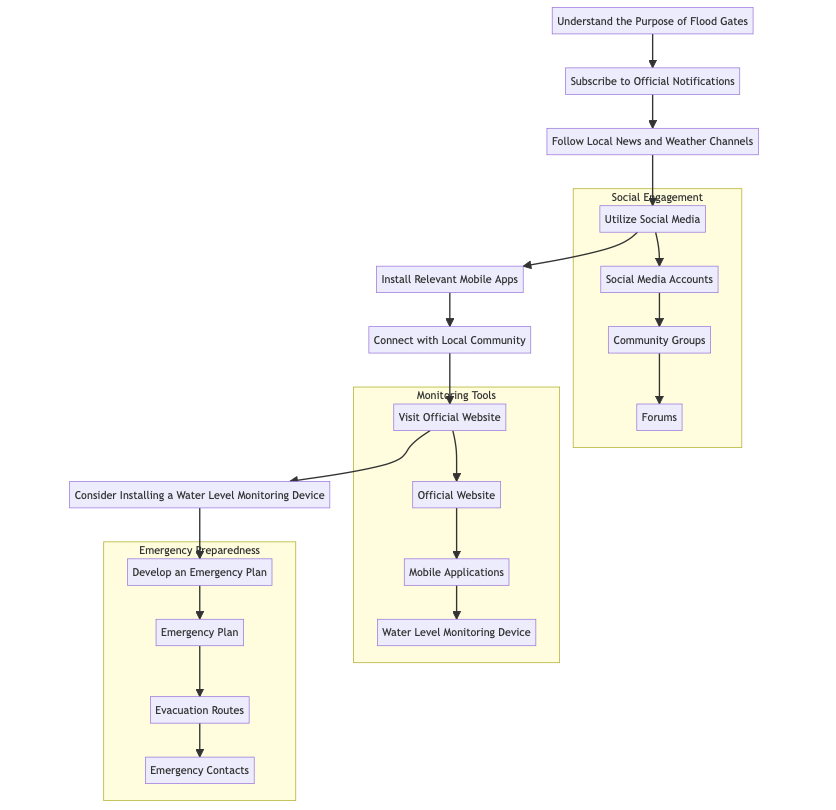
How to Know When Flood Gates Open at Lake Murray Dam
Step 1: Understand the Purpose of Flood Gates
Learn why and when flood gates are typically opened at dams, such as during heavy rainfall or for routine maintenance.
Step 2: Subscribe to Official Notifications
1. Identify and subscribe to official notifications from the local government or the entity responsible for managing Lake Murray Dam.
2. Receive email or SMS alerts related to the flood gates opening.
Step 3: Follow Local News and Weather Channels
1. Tune in to local news channels and weather stations for updates on rainfall and potential flooding.
2. Pay attention to emergency announcements or warnings related to the dam.
Step 4: Utilize Social Media
1. Follow official social media accounts of local authorities, environmental agencies, or community groups related to Lake Murray Dam.
2. Check for regular updates or warnings about the flood gates.
Step 5: Install Relevant Mobile Apps
1. Search for mobile applications that offer real-time updates on water levels, flood gates, and other related information for Lake Murray Dam.
2. Ensure the application is from a reputable source.
Step 6: Connect with Local Community
1. Engage with local community groups or forums online that focus on Lake Murray Dam.
2. Regularly interact to stay informed about any anticipated flood gate openings.
Step 7: Visit Official Website
1. Regularly check the official website related to Dam for updates on flood gate operations.
2. Look for a dedicated page or section containing real-time data or announcements.
Step 8: Develop an Emergency Plan
1. In case of sudden flood gate openings, have an emergency plan in place for your family or property.
2. Include evacuation routes and emergency contacts.
Read More

